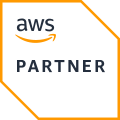Learn the essentials of South Africa's POPIA, its impact on data protection, and how it compares to global privacy laws.
Automated Vendor Risk Assessment
You’ve likely heard the term “vendor risk” before, but what does it actually mean? Put simply, vendor risk is the potential that a third party could negatively impact your organization – whether through compromised data, disrupted operations, or some other issue.
Given the importance of protecting your business from any potential risks, it’s no surprise that vendor risk management has become a key concern for many organizations. But managing risk can be a complex and overwhelming task. That’s where automated vendor risk assessments come in.
What is an automated vendor risk assessment?
An automated vendor risk assessment is a process by which a technology platform or software reviews and analyzes third-party data in order to identify potential risks. Automated risk assessment tools can help organizations to automate the process of assessing and managing risk with vendors.
The use of automated tools can help to speed up the process of assessing risk, and can help to identify potential problems earlier.
What are the benefits of automated vendor risk assessments?
There are several benefits of automated vendor risk assessments.
- It automates the process of assessing risk, which saves time and resources.
- It provides a more consistent and accurate assessment of risk.
- It allows for better and more timely communication of risk to stakeholders.
- It enables organizations to identify and manage risks at the earliest possible stage.
- Iit helps to improve overall risk management practices.
Key components of automating vendor risk assessments
Automating vendor risk assessments is a great way to streamline your process of managing third-party risk. When you automate the process, you’re able to identify, prioritize and evaluate risks quickly and easily.
The key components of automating vendor risk assessments include:
Automated scoring system: This system identifies high-risk vendors by assigning them scores based on factors such as their security posture, past performance, and compliance history.
Risk assessment questionnaires: By leveraging automated questionnaires, you can easily assess the security posture of third-party vendors.
Vendor due diligence: This involves collecting information from third parties about their security policies and procedures, which helps you determine whether they meet your organization’s standards for data protection and privacy.
Cost benefits of automating vendor risk assessments
When it comes to automating vendor risk assessments, there are several cost benefits. For starters, automation can help streamline the whole process, reducing the need for manual effort from your team. This means fewer resources have to be spent on managing vendor relationships and assessing their risk level.
The time savings of automation also lead to a decrease in operational costs. With intuitive tools and automated workflows, you can quickly assess vendors and highlight any risks more efficiently. The more quickly you can spot potential issues, the faster you can address them – which helps avoid unexpected costs down the line. And when decisions are being made about third-party contracts or renegotiations, automation ensures that everything is done in an accurate and timely manner, helping keep costs down at every step of the process.
In short, automating your vendor risk assessment process can save huge amounts of time and resources.







